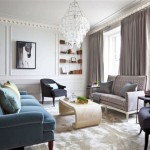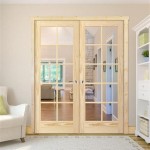Classic Interior Design Concepts: Timeless Elegance and Functionality
Classic interior design, often hailed for its enduring appeal and timeless elegance, goes beyond mere trends. Rooted in a profound understanding of form, function, and enduring beauty, it transcends fleeting fads and embraces principles that have stood the test of time. While the aesthetics of classic design may vary across different historical periods and cultural influences, certain fundamental concepts remain core to its essence. These concepts are not merely decorative elements but rather a framework for creating spaces that are both aesthetically pleasing and deeply functional, fostering a sense of harmony and enduring appeal.
Emphasis on Functionality and Practicality
Classic interior design places a high value on functionality and practicality. Spaces are designed with a clear understanding of how they are used and the needs of the people who inhabit them. This principle is reflected in the selection of furniture, materials, and layout. Furniture pieces are chosen for their durability, comfort, and versatility, ensuring that they serve multiple purposes and adapt to changing needs. For instance, a classic Chesterfield sofa, known for its deep button tufting and elegant lines, is not only a stunning focal point but also a comfortable seating option suitable for both formal gatherings and everyday use. Similarly, the choice of materials prioritizes durability and longevity. Natural materials like wood, leather, and stone are favored for their resilience and ability to age gracefully, adding character and warmth over time.
Synergy of Color, Texture, and Pattern
Classic design excels in the harmonious interplay of color, texture, and pattern. Color palettes are often drawn from nature, embracing rich, earthy tones that evoke a sense of calm and sophistication. Neutral shades like cream, beige, and gray provide a foundation, while accents of bolder colors, such as jewel tones or deep blues and greens, add vibrancy and visual interest. Texture plays a vital role in adding depth and dimension to the space. Different materials, from the smooth surface of marble to the tactile warmth of woven textiles, are used to create a multi-sensory experience. Patterns, whether geometric, floral, or damask, are incorporated thoughtfully, adding visual intrigue without overwhelming the overall aesthetic. The use of these elements in a carefully orchestrated manner creates a feeling of balance and harmony, ensuring that the space is visually stimulating yet calming and inviting.
The Significance of Balance and Proportion
Classic design emphasizes balance and proportion, creating a sense of harmony and visual appeal. This principle is evident in the layout of the space, the placement of furniture, and the selection of decorative elements. Symmetry is often employed to create a sense of order and visual stability, while asymmetry can add dynamism and visual intrigue. The scale and proportion of furniture and accessories are carefully considered to ensure that each element complements the others and contributes to the overall aesthetic balance. Proportional relationships between furniture pieces, wall art, and architectural details are thoughtfully planned to create a sense of coherence and visual unity. This careful attention to detail contributes to the timeless elegance and enduring charm that defines classic interior design.
The Power of Natural Light and Air
Classic design recognizes the importance of natural light and air in creating a welcoming and invigorating environment. Rooms are designed to maximize natural light, often incorporating large windows and skylights. This allows for ample sunlight to flood the space, creating a sense of openness and warmth. Adequate ventilation is also crucial, ensuring a comfortable and healthy atmosphere. This emphasis on natural elements reflects the desire to connect with the outdoors and create a space that feels fresh, airy, and inviting. Whether it's a grand living room with floor-to-ceiling windows overlooking a lush garden or a cozy library bathed in soft sunlight, classic design embraces the transformative power of natural light and air to enhance the overall ambiance and create a sense of tranquility.
Attention to Detail and Craftsmanship
Classic interior design values craftsmanship and meticulous attention to detail. This is reflected in the selection of furniture and decorative elements, which are often handcrafted with the highest quality materials and techniques. From the intricate carvings on antique furniture to the hand-stitched upholstery, every detail is considered and executed with precision. This attention to detail contributes to the enduring quality and timeless appeal of classic design. Even seemingly small details, such as the hardware on cabinetry or the finish on a wooden floor, are chosen with care to ensure that everything complements the overall aesthetic and reinforces the sense of craftsmanship and elegance. This unwavering commitment to quality and detail ensures that each element contributes to the overall beauty and longevity of the space.

What Is Modern Classic Style In Interior Design Inspiration Books Blog

Modern Classic The Enduring Chapter Of Contemporary Ideas Book

Traditional Home With Classic Interiors Bunch Interior Design Ideas

Modern Classic Interior Design Ideas For Your Home Designcafe

10 Top Transitional Interior Design Must Haves For The Perfect Home

Traditional Interior Design Defined And How To Master It Décor Aid

Interior Design Ideas For Classic Houses Bathrooms Architect

Before After Modern Classic Interior Design Makeover Decorilla

25 Modern Classic Living Room Interior Design Ideas

The Concept Of Modern Classic Interior Design Was Used In This Residence Prodigy Designs
Related Posts








